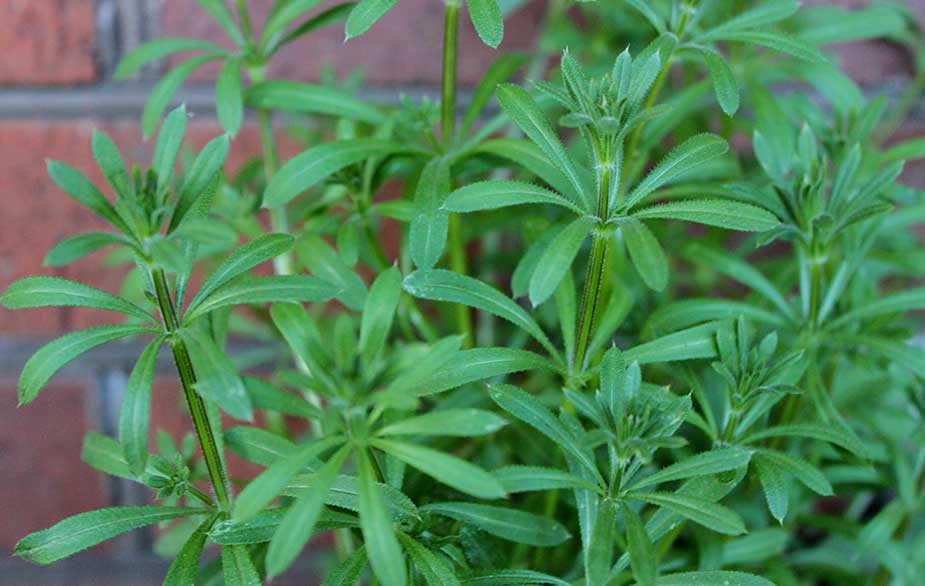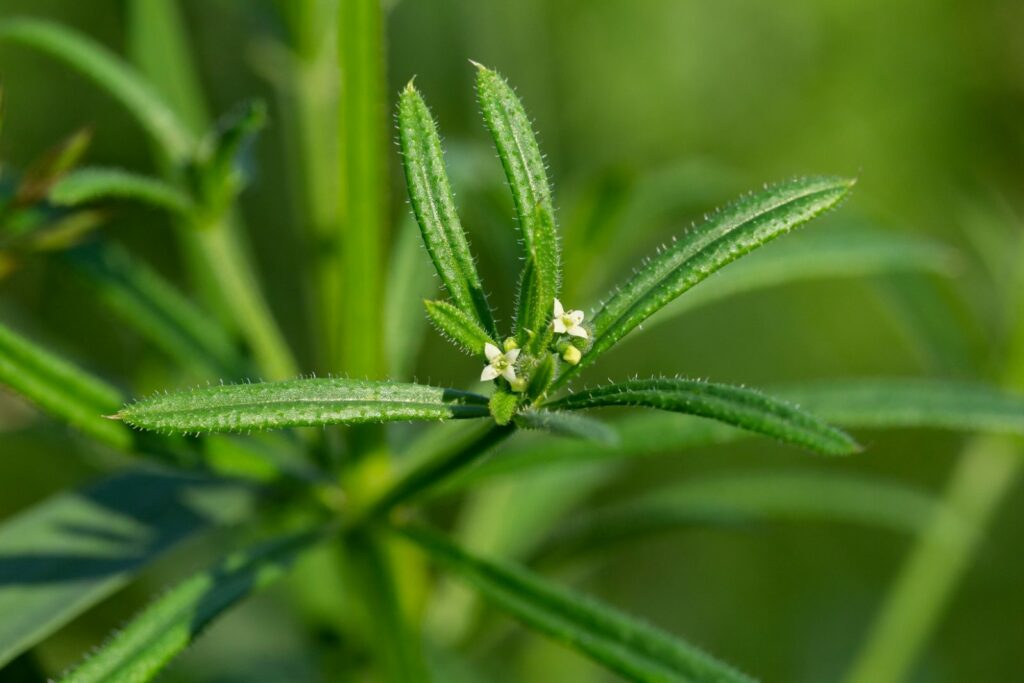Cleavers, scientifically known as Galium aparine, is a remarkable plant that offers a multitude of benefits. This versatile herbaceous annual is found in various regions across the globe, including North America, South America, North Africa, Central America, and even parts of China. With its unique properties and diverse applications, cleavers have captured the attention of researchers, herbalists, and enthusiasts alike. In this comprehensive article, we will delve into the fascinating world of cleavers, exploring its botanical characteristics, medicinal properties, culinary uses, and ecological significance.
Botanical Features of Cleavers
Cleavers, belonging to the Rubiaceae family, are characterised by their slender, straggling stems and small, whorled leaves. The plant can grow up to a height of 1 meter and features hooked prickles that aid in its ability to climb and attach to other plants or objects. The leaves are lanceolate and typically have fine hairs. Cleavers produce small white flowers that give way to prickly fruits containing seeds. These distinctive features contribute to the plant’s adaptability and spread.

Cleavers: A Common Weed with Uncommon Benefits
Cleavers, often referred to as sticky willy, stickyweed, bedstraw, goosegrass, catchweed and grip grass, may be commonly considered a weed, but they possess remarkable benefits that make them worth exploring further.
Ubiquitous Presence
Cleavers are widely distributed across different regions and habitats. They thrive in diverse environments, including gardens, meadows, hedgerows, and disturbed areas. Their ability to adapt and rapidly colonise open spaces has earned them a reputation as a common weed. Despite this classification, cleavers’ ubiquity highlights their adaptability and ability to flourish in various conditions.
Edible Weed
While often overlooked, cleavers are, in fact, edible and have a history of culinary use in certain cultures. The young leaves and stems of cleavers can be harvested and added to salads, soups, or stir-fried dishes. They contribute a unique flavour and texture to meals. Cleavers are also rich in vitamins, including vitamins A, C, and E, making them a nutritious addition to the diet.
Medicinal Properties
Cleavers have a long-standing history of use in traditional herbal medicine. The herb is renowned for its diuretic properties, which promote healthy kidney function and support urinary tract health. Cleavers have also been used as a herbal remedy for various skin conditions, such as rashes, eczema, and minor burns. The plant’s soothing and anti-inflammatory effects make it valuable in soothing skin irritations and aiding in the healing process.
Skin Benefits
Cleavers have gained recognition for their skin-friendly properties, making them a valuable ingredient in natural skincare products. Cleavers-infused preparations, such as creams, lotions, and ointments, can help soothe skin irritations, relieve itching, and promote the healing of minor wounds. Their gentle nature and compatibility with different skin types make them a popular choice for those seeking natural skincare solutions.
Traditional Uses
Cleavers hold cultural significance in traditional practices around the world. In addition to their medicinal uses, they are believed to possess protective and purifying qualities. Cleavers have been incorporated into rituals, ceremonies, and herbal preparations as symbols of healing and spiritual cleansing.
Potential Health Benefits
While traditional uses and anecdotal evidence support the health benefits of cleavers, scientific research is still ongoing. Studies have explored the antioxidant, anti-inflammatory, and antimicrobial properties of cleavers. Active compounds, such as phenolic acids, found in cleavers have shown potential in various areas of health and wellness. However, further research is necessary to fully understand and validate their effects on human health.
Ecological Impact
Cleavers play a role in ecological systems as an important pioneer plant. Their ability to thrive in disturbed habitats helps stabilise soil, prevent erosion, and restore ecological balance. Cleavers also provide food and habitat for certain wildlife, contributing to biodiversity. However, their invasive nature can pose challenges to native plant species and require proper management in agricultural and natural environments.

Cleavers: Exploring its Global Presence
Cleavers have made its mark in different regions around the world. Let’s take a closer look at its presence and significance in specific areas:
- North America: Cleavers are native to North America and have become naturalised in various states. The plant’s tenacious nature and ability to spread rapidly have earned it the nickname “sticky willy.” Cleavers can be found in diverse habitats across the continent, from woodlands and meadows to gardens and agricultural fields.
- South America: Cleavers have established themselves in South America, where they thrive in different climates. The plant’s presence is notable in countries such as Brazil, Argentina, and Chile. Cleavers’ adaptability allows them to grow in various ecosystems, from rainforests to temperate regions.
- North Africa: Cleavers have found their way to North Africa and can be found in countries such as Morocco, Algeria, and Tunisia. The plant’s adaptability allows it to grow in both arid and Mediterranean environments. Cleavers’ presence in North Africa highlights their ability to colonise diverse landscapes.
- Central America: Cleavers have become a part of the Central American flora, populating countries such as Mexico, Costa Rica, and Honduras. The plant’s versatility allows it to flourish in tropical and subtropical regions. Cleavers’ ability to adapt to different climates contributes to their widespread distribution.
- China: Cleavers have made their presence known in certain regions of China. Known as “Chinese cleavers” or “lao hu ji,” they are recognised for their medicinal properties and have been used in traditional Chinese medicine for centuries. Cleavers’ historical significance in Chinese culture underscores their value as a herbal remedy.

The Future of Cleavers
Cleavers, with its rich history and diverse applications, continues to intrigue researchers and enthusiasts. Ongoing scientific studies are shedding light on its active ingredients, potential health benefits, and ecological impact. As we delve deeper into the world of cleavers, new opportunities for its utilisation emerge:
- Natural Compounds: Cleavers are being explored as a source of natural compounds with potential applications in pharmaceuticals, cosmetics, and other industries. The identification and isolation of specific compounds within cleavers may lead to the development of new drugs or natural-based products.
- Sustainable Agriculture: Cleavers’ ability to thrive in various environments and their soil-stabilising properties make them interesting candidates for sustainable agriculture practices. Integrating cleavers into crop rotations or cover cropping systems can enhance soil health, reduce weed pressure, and promote ecological balance.
- Herbal Medicine: Cleavers’ traditional uses in herbal medicine continue to be explored. Further research is needed to understand the mechanisms of action, dosage, and potential interactions with other medications. Cleavers may find applications in treating various ailments, such as urinary tract disorders, skin conditions, and inflammation.
- Ecosystem Restoration: Recognising the ecological significance of cleavers, efforts are being made to incorporate them into ecosystem restoration projects. Cleavers’ ability to colonise disturbed habitats can aid in the recovery of degraded ecosystems, promoting biodiversity and ecological resilience.
Conclusion
Cleavers are a plant of immense value and potential. From its edible qualities and traditional uses in herbal medicine to its ecological significance, cleavers have captured the attention of people across different cultures and disciplines. Whether you’re interested in exploring its culinary potential, harnessing its medicinal properties, or appreciating its role in the natural world, cleavers offer a wealth of opportunities to discover and appreciate the wonders of nature.
Sources and References
- “Herbal Medicine: A Comprehensive Guide to Herbal Medicine and Home Remedies” by Valerie Ann Worwood.
- “The Medicinal Flora of Britain and Northwestern Europe” by Anne Pratt.
- “The Wild Flower Key: How to Identify Wild Flowers, Trees, and Shrubs in Britain and Ireland” by Francis Rose.

Faye is a valuable contributor at Glenlivet Wildlife, with a degree in Botany and expertise in plants and flowers. She has embarked on expeditions to remote areas, interviewing renowned botanists and biologists to provide unique insights into flora worldwide. Her favourite flower is the Jade Vine, admired for its beautiful colour and delicate appearance.
